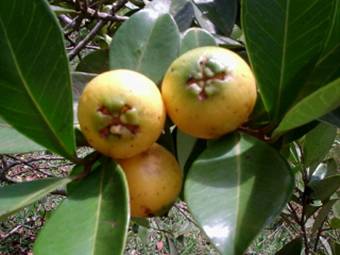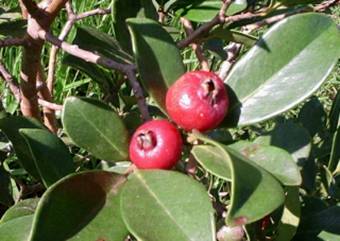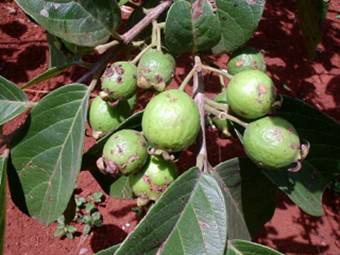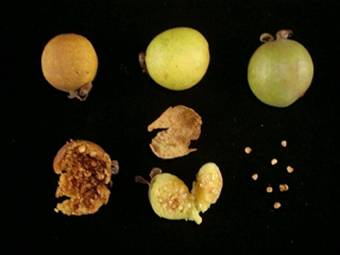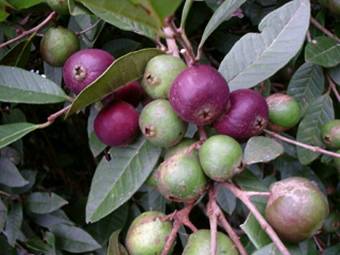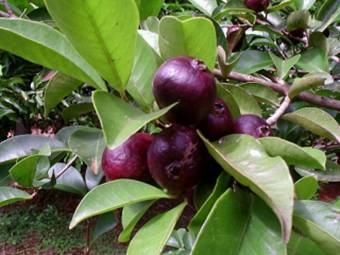PSIDIUM CATTLELIANUM, PSIDIUM GUINEENSE, PSIDIUM MYRTOIDES, PSIDIUM EUGENIAEFOLIA AND PSIDIUM CATTLELIANUM
POPULAR NAMES: Araçá amarelo or Yellow Strawberry Guava (P. cattleliaunum), Araçá vermelho or Red Strawberry Guava (P. cattlelianum var. humile), Araçá azedo or araçá-icica (P. myrtoides) and Araçá preto, Araçá-una or Araza-One (P. eugeniaefolia).
MYRTACEAE
|
Yellow Strawberry Guava (P. cattlelianum)
|
Red Strawberry Guava (P. cattlelianum var. humile) |
|
Savannah Guisaro Guava (P. guineense var. araça) |
Field Guisaro Guava (P. guineense var. arasahum) |
|
Araçá icica (P. myrtoides) |
Araza-One (P. eugeniaefolia) |
INDIGENOUS NAME: Araçá comes from the Tupi Guarani and means "fruit that has eyes" in reference to persistent sepals giving the appearance of eye in the fruit. The adjectives indicate quality of fruits. Icica means "sour" and Uma means "black" by cause of blackish purple color of the fruit.
Origin: The 4 species of Araçá above, occur in Brazil, the yellow strawberry guava and icica appear in a semideciduous forest (which loses leaves in winter) across the basin of the Rio Paraná and the Atlantic Forest of Espírito Santo to Rio Grande do Sul and Araçá occurs in the savannah from Amazonia to the north of Argentina, in different forest formations.
Characteristics:
These are medium-sized shrubs, grow
Planted in the site of Frutas Raras: The Yellow Strawberry Guava and Araza-One were planted in September 1999, the Savannah Guisaro Guava and the Field Guisaro Guava were planted in November 2002, and Araçá-icica was planted in January 2003.
Tips for cultivation:Fast-growing plants that resist the frost below 0°C (32°F), grow at any altitude. The soil may be deep, moist, neutral, with sandy or clay formation (red soil) and even stony, but must have good natural fertility. The tree begins to fruit from the 2nd year for most species, from the 4th year in the case of araçá-icica and araza-one.
Propagation: The
seeds are light brown in color, reniform (with form of kidney) and germinate
in
Planting:
Can be planted in full
sun and in forests with large trees well spaced. Space of
Cultivating: Making only training pruning of the crown and remove branches that were appeared at the base of the trunk. Fertilize with organic compost, may be (6 liters) poultry litter + 50 g of NPK 10-10-10 doubling that amount every year until the 4th year.
Uses: The fruit is consumed in-kind, used to make several delicious desserts. The trees should not miss in permanent reforestation preservation, as its fruit feeding species of birds and other animals and is of good wood quality for internal works.
Flowering in the site of Frutas Raras: From October to January (for P. catllelianum and P. guinense) and from December to February (for the P. myrtoides and P. eigeniaefolia).
Fruiting in the site of Frutas Raras: The mature araza starting in September with some species, is rotated with other species until the month of March.
BUY THE BOOK “COLECIONANDO FRUTAS”
Back to the seedlist (English) or back to Myrtaceae (Portuguese)
